The Braddock Bay Raptor Research center [BBRR] is located on the southern shore of Lake Ontario near the north west corner of Rochester, NY, a city famous as the global headquarters of Kodak, and BBRR was the primary reason for today’s visit.
More will be written in Part 2 of this four-part article (see foot of page for links) regarding the excellent opportunities to watch migrating raptors at BBRR, and the reason they come here in high numbers but our group visit, on 27 April 2014, started with an owl prowl which disappointingly drew a blank, then we continued with a visit to the nearby Braddock Bay Bird Observatory [BBBO] banding station.

Golden-crowned Kinglet. Photo copyright, Eddie Wren, 2014. All rights reserved.
In my own opinion, one of the best things to come out of the banding visit was the chance to see North America’s two kinglet species, side-by-side.
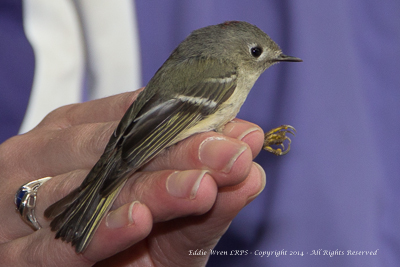
Ruby-crowned Kinglet. Photo copyright, Eddie Wren, 2014. All rights reserved.
The Golden-crowned Kinglet (Regulus satrapa) has, as its name makes clear, a golden or yellowy-coloured crown, front-to-back on its head, but when seen in the wild, it differs most visibly from the Ruby-crowned Kinglet (Regulus calendula) in having full-head-length black and white stripes above its eyes, whereas the the Ruby-crowned has only a white ring around its eyes. The ruby-crowned also has the ability to hide its bright red pate under the surrounding drab olive feathers, to help with camouflage when predators are about (see photo, left).

Blue-gray Gnatcatcher. Photo copyright, 2014, Eddie Wren. All rights reserved.
Birders travelling between North America and Europe might wish to check Golden-crowned Kinglets (Regulus satrapa) against the Goldcrest (Regulus regulus) and the Firecrest (R. ignicapillus).
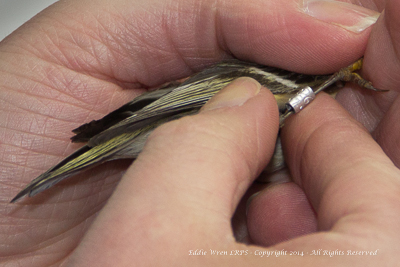
The numbered band/ring. Photo copyright, 2014, Eddie Wren. All rights reserved.
The most remarkable fact of all is that Golden-crowned Kinglets — tiny, 4-inch long insect-eaters — overwinter not only throughout the USA but also in southern Canada and even in Alaska. The obvious question is how do they find their tiny insect prey species in frozen north woods in winter. When I have the time, this will be the subject of a separate post in this blog.

Ruby-crown’s wing. Photo copyright, 2014, Eddie Wren. All rights reserved.
Back to the subject of the BBBO station, it is always a pleasure to watch the deftness and gentleness of experienced bird ringers/banders — the way they can hold tiny and relatively fragile creatures securely without causing any harm — and the three ladies today were no exception. I even asked them whether women are better at handling tiny birds than are men but was told it is not a gender issue, it’s just down to the care and to some extent the hand-size of the person in question.

Ruby-crown’s tail. Photo copyright, 2014, Eddie Wren. All rights reserved.
Each bird brought in is checked to see whether it is already wearing a band (referred to as a ‘ring’ in British birding circles), in which case the number is noted so that the bird’s movements since it was first ringed may be recorded. If that’s not the case then obviously a ring is fitted and the number on such is noted and entered into the system. Over the last 25-30 years, how much must computerisation and the Internet have done for bird banding research, around the world?!
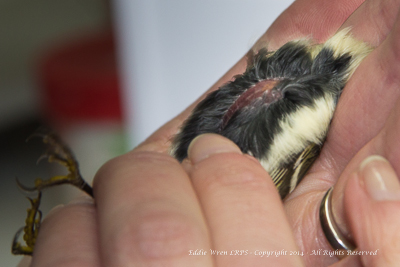
Blowing on the breast feathers so the bander can check the bird’s fat reserves. Photo copyright, 2014, Eddie Wren. All rights reserved.
The bird is also checked in relation to gender and physical condition. Measurements are taken and — perhaps the strangest sight for first-time viewers — the breast feathers are gently blown back so that the amount of fat the bird is carrying can be estimated. This is crucial to the bird’s ability to migrate. If it isn’t carrying enough fat (fuel!) it will not survive the long journey.

Listening to the remarkably fast purr of a kinglet’s heartbeat. Photo copyright, 2014, Eddie Wren. All rights reserved.
When it came to releasing these remarkable little creatures, one was gently held to people’s ears so that we could hear the heartbeat — so fast that it could best be described as a purring noise.
Thank you to the BBBO banding team for the demonstration. It is always a privilege to see this ‘up close and personal’ side of birds and the research work. Without the efforts of banders/ringers over the decades, it is frightening to think how little we would still know about birds… period!
Eddie Wren
Other sections of this topic:
Part 1: Songbird Banding — you are currently on this page
Part 2: Raptor Watching
Part 3: Captive (i.e. Injured) Raptors
Part 4: Photo Gallery (submitted images)

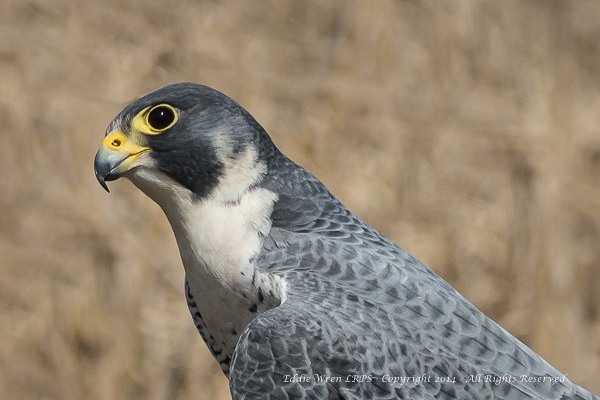














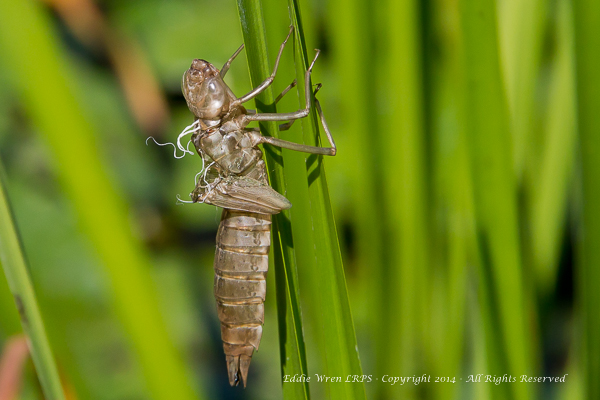






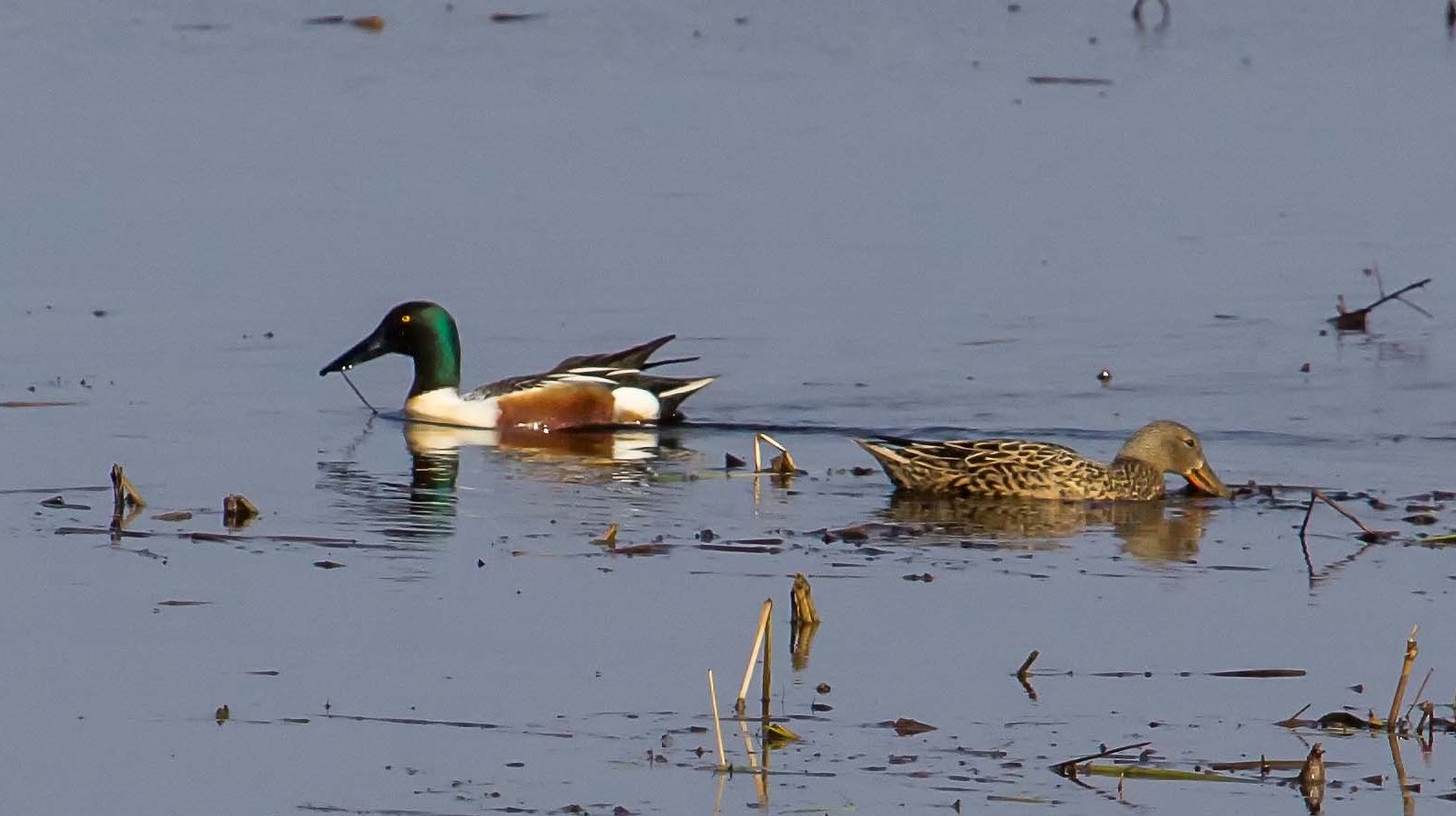
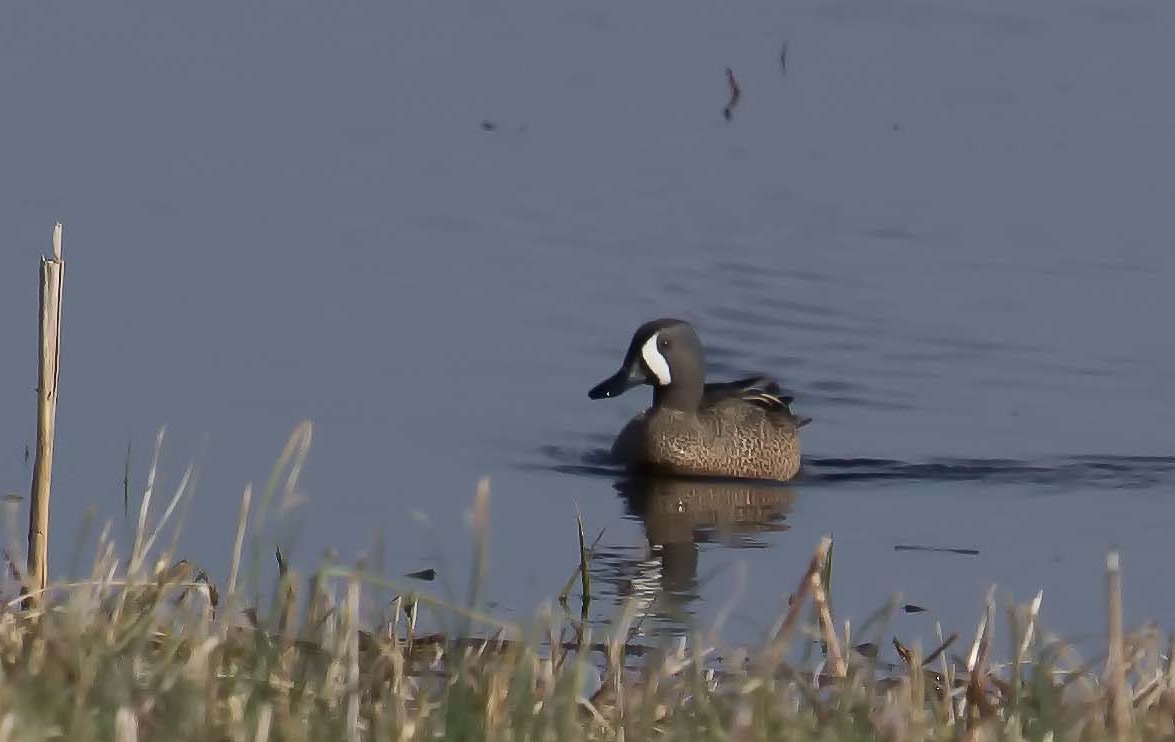
![Red-spotted Newt by J. Carmichael. [Wikimedia, Commons License]](http://eddiewren.com/wp-content/uploads/2014/04/Red-spotted-Newt_J.Carmichael_Wikimedia-Commons.jpg)






